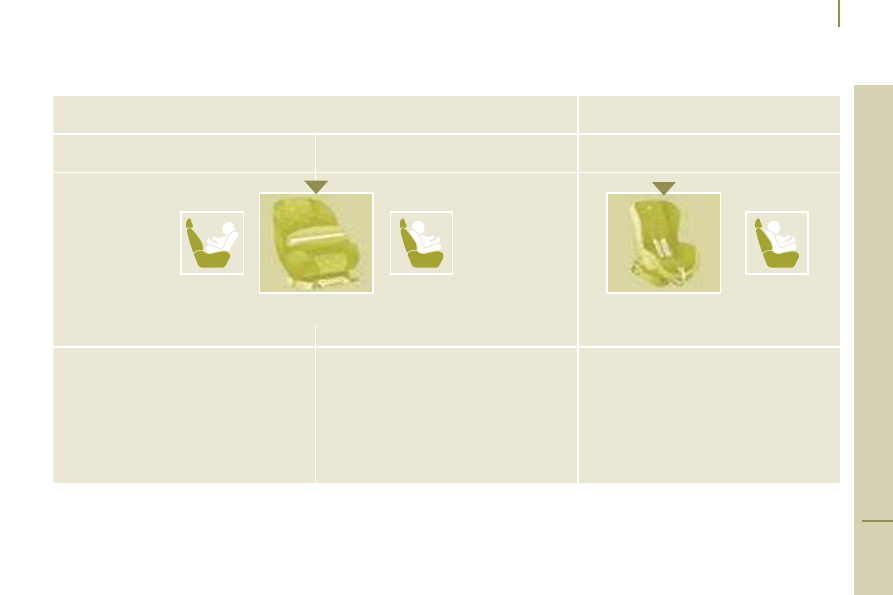Peugeot 807 Dag (2007.5). Instruction - part 10

Child safety
SA
FET
Y
14
3
5
ISOFIX CHILD SEATS RECOMMENDED BY PEUGEOT AND APPROVED FOR YOUR VEHICLE
These child seats can also be used on seats which are not fitted with ISOFIX mountings. In this case, it is essential that they are secured to
the vehicle's seat by means of the three point seat belt.
Follow the instructions for fitting the child seat indicated in the seat manufacturer's installation guide.
ISOFIX KIDDY
ISOFIX RÖMER Duo Plus
Group 0+: from birth to 13 kg
Group 1: from 9 to 18 kg
Group 1: from 9 to 18 kg
Installed in the rear facing position.
Installed in the forwards facing position.
Installed in the forwards facing position only.
The body of the child seat must be in
contact with the back of the vehicle's front
seat.
It is essential that the vehicle's front seat
is adjusted to the intermediate longitudinal
position.
Secured without the top strap.
Three child seat body angles: sitting,
reclining and lying positions.
Adjust the vehicle's front seat so that the
child's feet do not touch the seat back.
The ISOFIX KIDDY seat is installed in row 2 only.